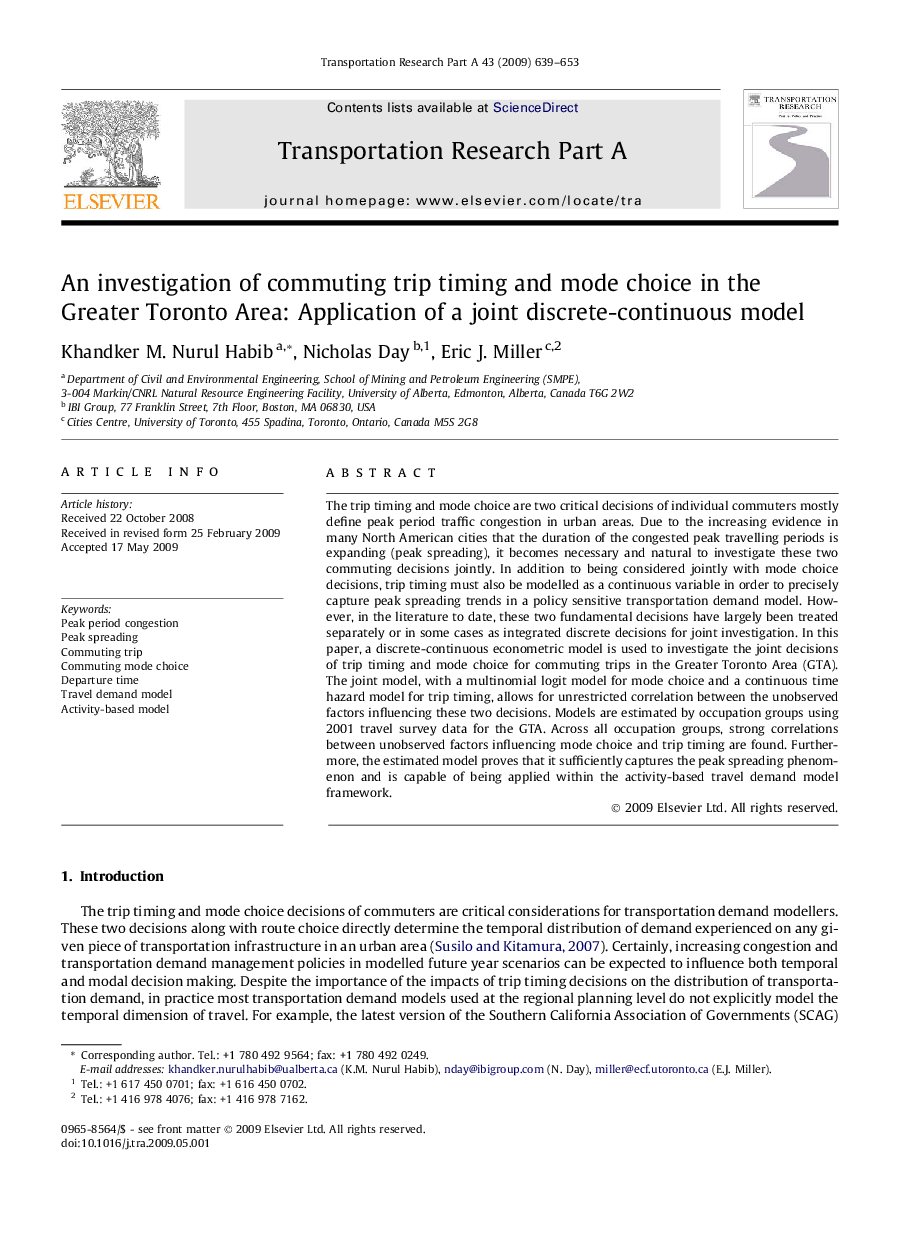| Article ID | Journal | Published Year | Pages | File Type |
|---|---|---|---|---|
| 312414 | Transportation Research Part A: Policy and Practice | 2009 | 15 Pages |
The trip timing and mode choice are two critical decisions of individual commuters mostly define peak period traffic congestion in urban areas. Due to the increasing evidence in many North American cities that the duration of the congested peak travelling periods is expanding (peak spreading), it becomes necessary and natural to investigate these two commuting decisions jointly. In addition to being considered jointly with mode choice decisions, trip timing must also be modelled as a continuous variable in order to precisely capture peak spreading trends in a policy sensitive transportation demand model. However, in the literature to date, these two fundamental decisions have largely been treated separately or in some cases as integrated discrete decisions for joint investigation. In this paper, a discrete-continuous econometric model is used to investigate the joint decisions of trip timing and mode choice for commuting trips in the Greater Toronto Area (GTA). The joint model, with a multinomial logit model for mode choice and a continuous time hazard model for trip timing, allows for unrestricted correlation between the unobserved factors influencing these two decisions. Models are estimated by occupation groups using 2001 travel survey data for the GTA. Across all occupation groups, strong correlations between unobserved factors influencing mode choice and trip timing are found. Furthermore, the estimated model proves that it sufficiently captures the peak spreading phenomenon and is capable of being applied within the activity-based travel demand model framework.
